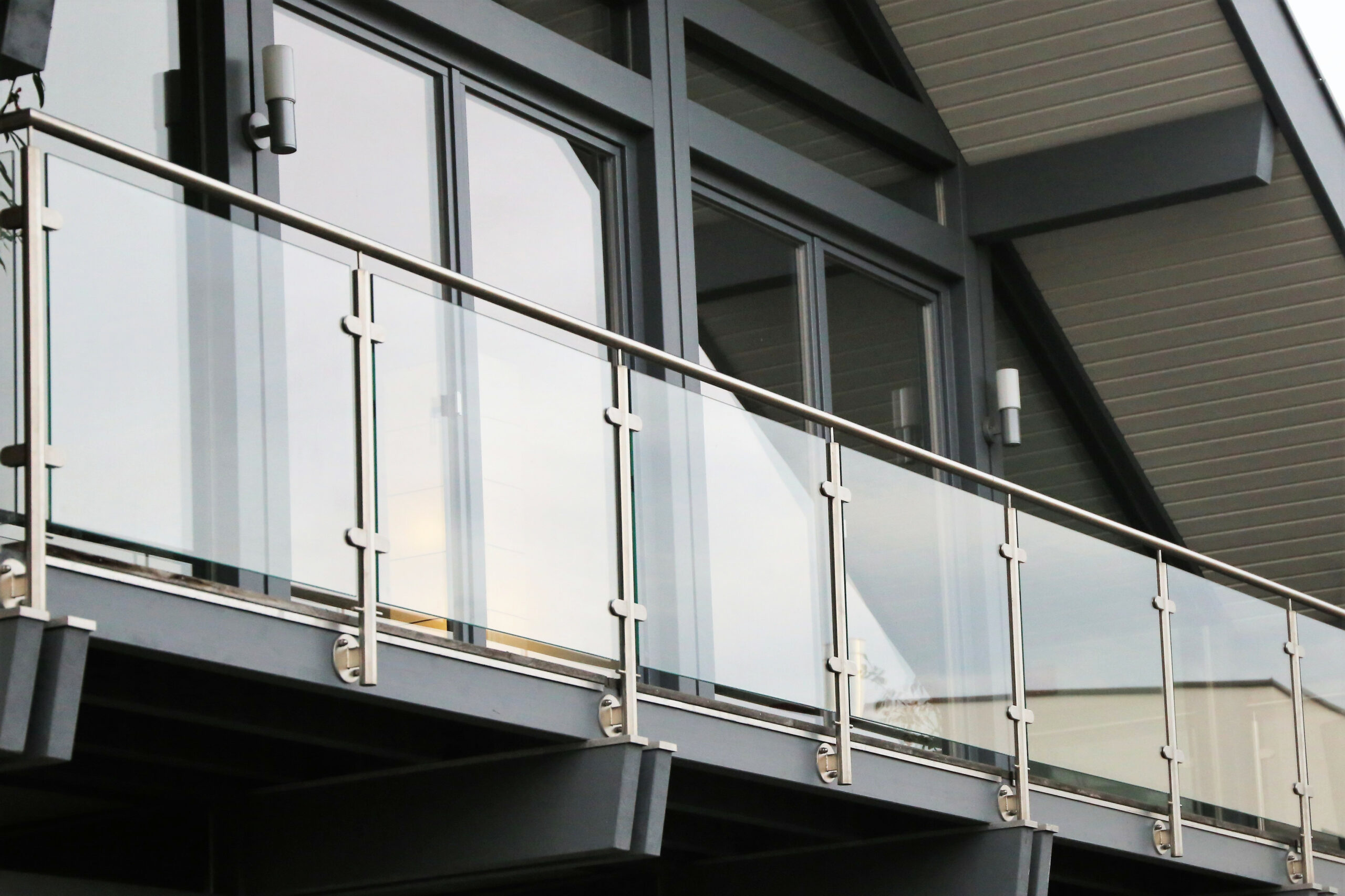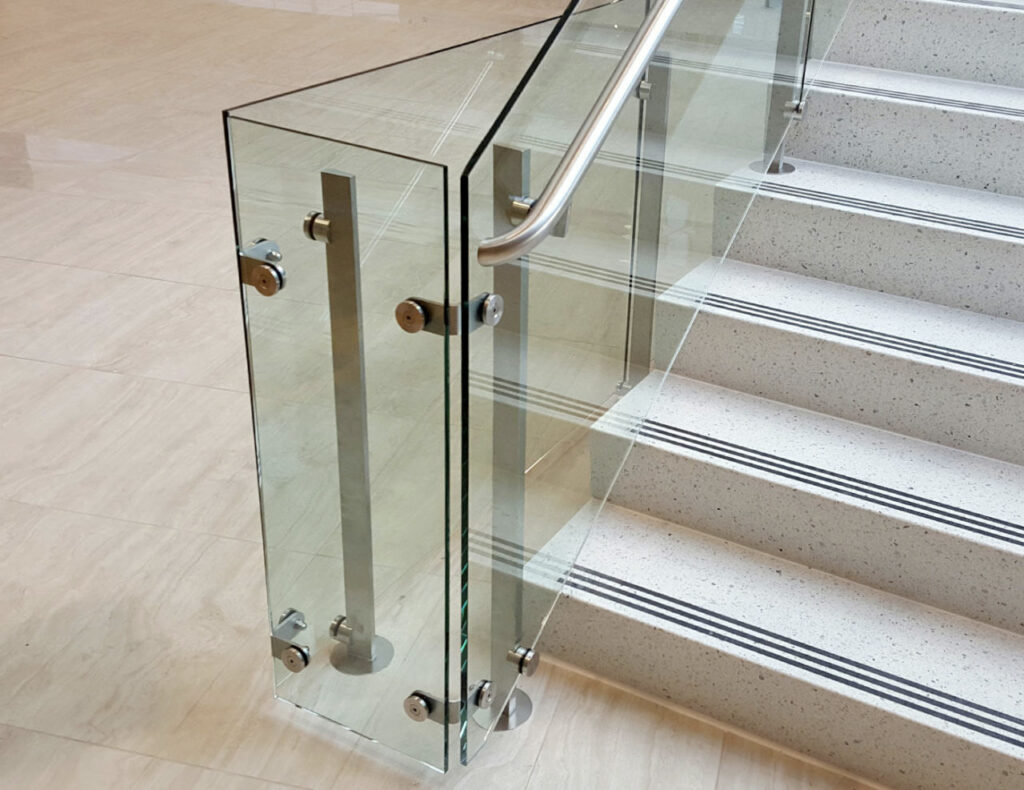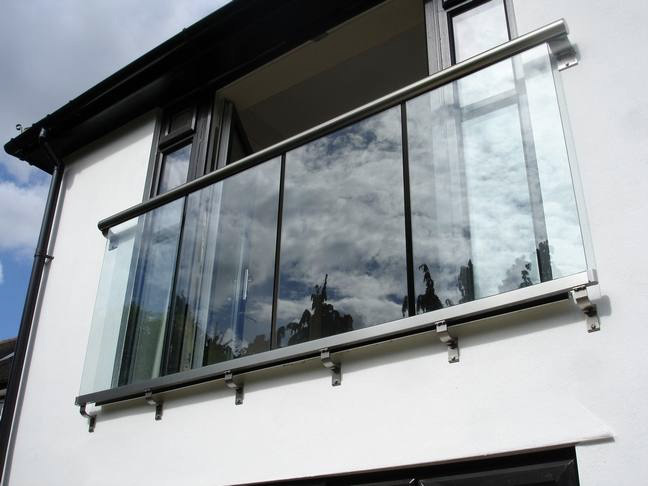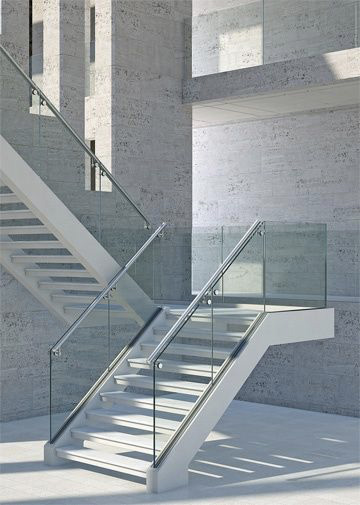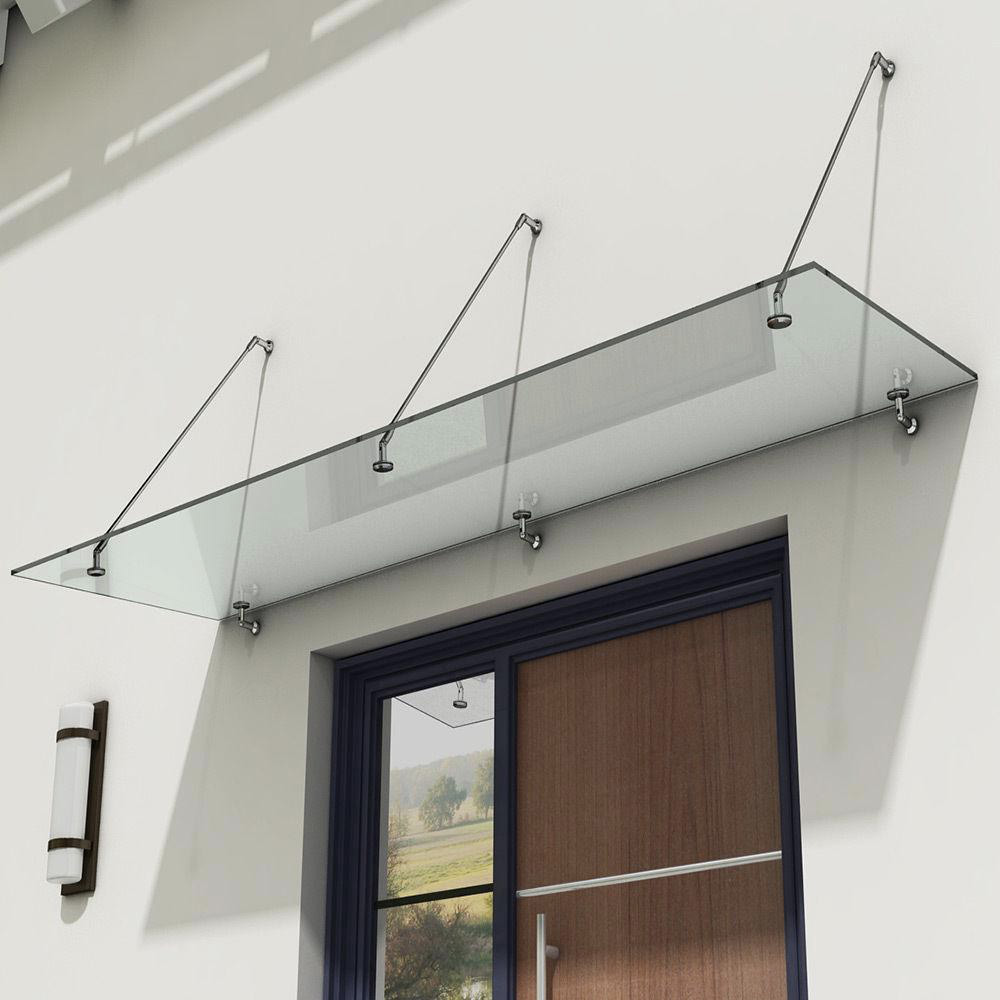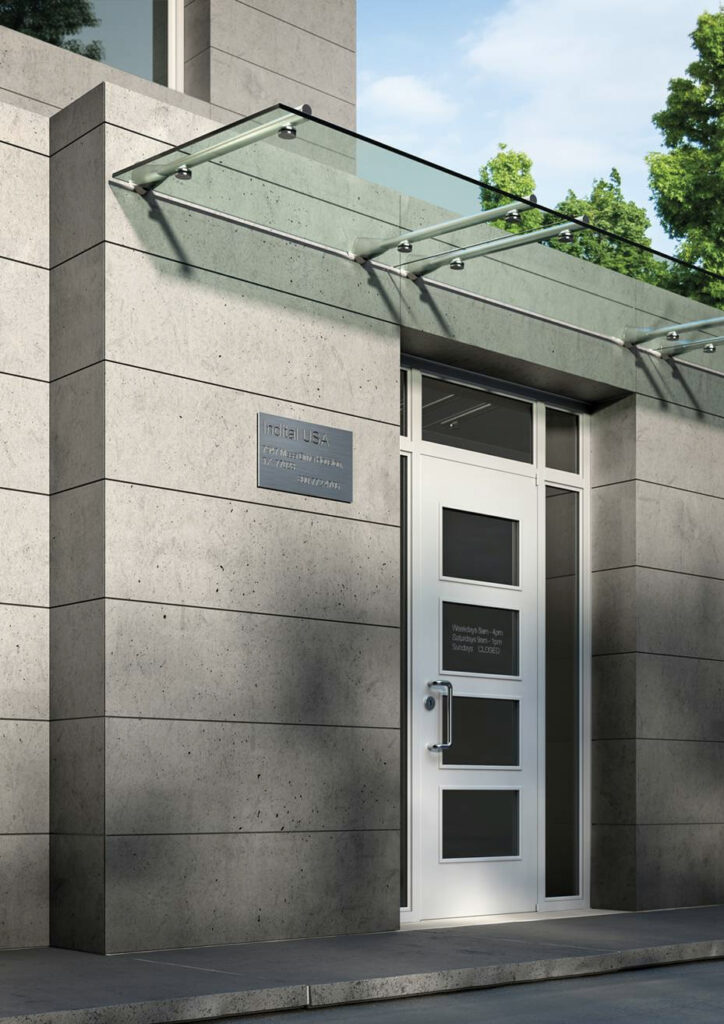[vc_row][vc_column][vc_column_text]Balustrades have been around for a very long time, were used in ancient architecture – and are still popular today. The name originally came from the Italian word ‘balaustra’, which refers to the pomegranate flower. This fits, because the first iterations were similar to the half opened flower or the pomegranate flower bud.
Balustrades are basically a row of shaped pillars or vertical pieces that are topped with a railing – used to edge everything from bridges and terraces to balconies and staircases. They can even be used around the top of a building with a flat roof.
This type of architectural design has been seen in ancient architecture, including India, though Assyria is where some of the earliest examples of this design can be found.
The design feature has two purposes. First, it’s a decorative finish for your balcony or staircase, a way to make your home look more elegant. Second, it is a safety feature, designed to prevent falls from high places. Since it is meant for safety, it’s important that your rails and balustrades are properly built and meet safety regulations.
Balustrade Systems in the Past
While Assyria boasts the first known balustrades, thanks to images and murals that were designed between the 13th and 7th centuries BC, the Renaissance period was when this design type really caught on. Michelangelo and Bernini both designed a variety of buildings that used balustrades as a design feature. This element can also be seen in the Medici palace in Italy.
Assyrian murals showed that balustrades were once used in their palaces, usually to line the windows. These interesting sculptural murals give us a bit more insight into what architectural designs were used back then.
According to what we’ve seen of Greek and Roman construction, balustrades were not used in these time periods. In fact, after the Assyrian use of the method, there was nothing until nearly the 16th century, when they reappeared in Italian palaces. You can see an example of 16th century Italian Renaissance railings in the New York Metropolitan Museum of Art. The patio from Castle Velez Blanco was reconstructed in the museum, after being taken apart in the early 1900’s. It’s made of marble, so has special appeal to art dealers.
When these examples of balustrades were built, the most common method of building was with wood or clay, since these were readily available at that time. They were traditionally build with pillar-like uprights that had a wide rail at the top for the hands to hold onto. The rails provided a place to lean, but they also prevented falls from rooftops and stair landings.
While balusters were once just columns, things have changed over time. The once obvious, bulbous columns that formed the railings are now slimmer in most designs. They have been toned down and replaced with panels for the most part, with thinner upright supports that are used between the panels.
There are also some designs that use the verticals and then chain ropes run between them. These are not as secure as solid panels, so they may end up being used mostly on lower patios and balconies.
Today, balustrades are made with a variety of materials, including concrete, stone, glass, and steel, as well as more traditional items like wood and clay. The actual design has drastically changed, as well, so where the originals were created with miniature columns or pillars and topped with a handrail, today’s designs range from similar to panels of wood or glass set between metal or wood posts. There are even some designs that use chains instead of rails.
With so much history behind them, these railings belong to both historical buildings and modern ones. The designs have gradually changed over the centuries, but they are still quite popular as a form of both protection and decoration. You’ll find them in homes around the world and particularly in more elegant buildings.
Balcony Design
Looking for the best balcony design? There are so many to choose from that you may be a bit overwhelmed trying to figure out which you should opt for. There are a few things to keep in mind, however.
First, the design of your balcony needs to fit your home. A Juliet balcony, for example, won’t look great on some home models, but if you have a more classical design, then it will work very well. The balustrade design you select should also fit your house. There are so many choices now that you can work with these to create the perfect look for your home.
The traditional pillar design is available, of course, but you don’t have to use the wide options of early generations. Now you can use thinner uprights that are either straight or shaped, round or square. There may be panels set between the uprights, or chains, or even parallel rails. The options are endless and you can choose exactly what you want, to suit your home.
If you’re just fixing up an existing balcony, you might consider just adjusting the existing design slightly to fit the balustrades you are interested in installing. The size of the balcony may also have an effect on what you make it look like. You can either have an architect design the balcony, or you can look your own talents to come up with ideas. The balustrade company may also be able to help with some suggestions.
Finding the Right Balustrade Company
If you want to create a truly memorable balcony, you’ll need to find a company that can make and install your balustrade. There are many available that offer similar services, so you should take your time finding the perfect company. Ideally, they will have plenty of experience working with balusters and will be able to offer a variety of options in their portfolio.
You should decide early on what type of baluster you want for your home or balcony. This will help determine which company gets your business. You want someone who can actually fabricate what you’re looking for, so choose the style you need and then find a company that can make it just the way you want.
If you know someone who has installed balustrades, you can go ahead and ask them what company they used. However, it’s possible that you don’t know anyone and word of mouth won’t help much. In this case, you’ll need to go online and search for the type of balustrade you’re looking for. You’ll find a few different companies making them, depending on where you live. The trick now is to narrow the selection down.
You can try talking to the companies, which will give you a better idea of what they do and how their prices look. You can also look online and you’ll notice that many companies show up on Yell.com. If you read the reviews, you’ll find it easier to select one based on what the overall response to their services are. Online reviews can be immensely useful, as can talking to previous customers.
If you’re not quite sure what you want to do for your balcony, you can and should consult with the balustrade company. After all, they’ve been in the business for a while and should have plenty of ideas to get you started. You can also look at images of existing balustrades and railings to see what might fit the style of your home best.
Balustrades have been used for centuries and for good reason, they are a decorative element that also serves a purpose. While things have changed quite a bit over the years and today’s balusters look considerably different, the original purpose is still the same, to provide safety along the edges of balconies and rooftops, as well as stairs, and to look good doing it.
You can create a unique look with the available styles and turn your home into something even more elegant than before. Whether you are replacing and existing railing with balustrades or just plan to build your home from scratch, there are plenty of choices that you can select for your home’s staircases, balconies, and even rooftop patios. These look great and are easy enough to install that you could do it yourself, but it’s generally safer to have a professional handle that side of things.
Are you ready to add a balcony to your home? Need some help designing it? Let Square 1 help out. After all, this is what we do. Contact us today to book a consult.
[/vc_column_text][/vc_column][/vc_row]

